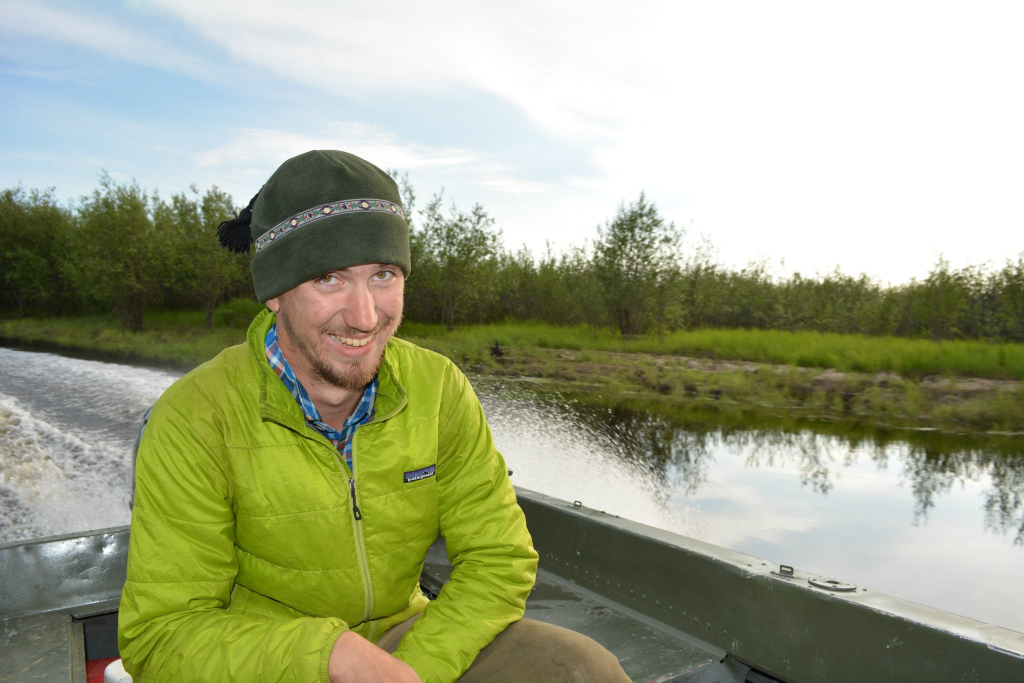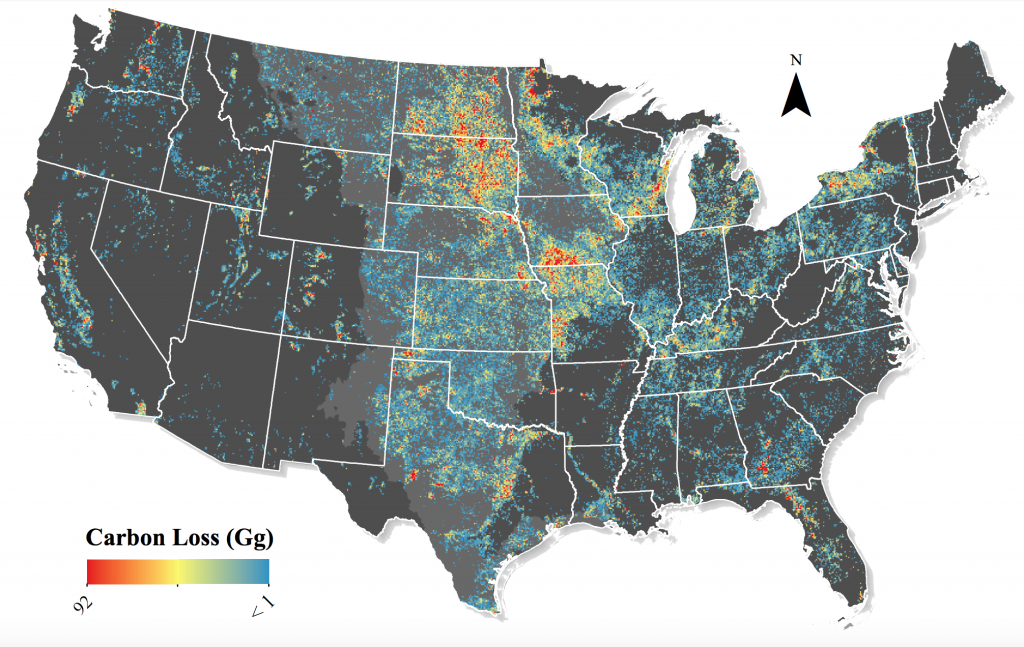
This week’s student profile is with Seth Spawn, a master’s student in Geography working with Professor Holly Gibbs and the Nelson Institute’s Center for Sustainability and the Global Environment (SAGE). Seth is currently researching the federal ethanol mandate in the Renewable Fuel Standard to explore interactions between policy, land use, and their combined effects on the earth system. As part of this project, he recently participated in a telepress conference with Collin O’Mara,CEO of The National Wildlife Federation (NWF).
Read our interview to hear about Seth’s experience on this project, as well as his pre-graduate school adventures where he, among other things, studied bubbles and survived KGB interrogation…
What drew you to the Geography master’s program at UW-Madison?
I was most drawn to the interdisciplinary nature of our department and its sort of liberal-artsy atmosphere. As a natural scientist studying the interactions between people and the earth system, it’s important, to me, that we give honest weight and consideration to our humanity. That sort of thought clearly has a home in our department.
What did you do between college and the start of your graduate program?
After College, I worked as a researcher at the Woods Hole Research Center, where I studied the response of arctic ecosystems to climate change and how this response could actually amplify climate change. This work took me on eight expeditions to the Alaska and Siberia where, among other things, I studied bubbles, learned to drive right-drive stick-shift, and survived KGB interrogation. While in Woods Hole, I also had the opportunity to co-author a report for the UN COP21 meeting in Paris – an experience that ignited my interest in applied research and the use of rigorous science to guide policy. I left Woods Hole in 2016 [for love] and worked on my axe handling, canoe paddling, and vegetable canning before joining a team of microbial ecologists at the University of Minnesota studying the impacts of agricultural land management practices on the microbes that promote plant productivity and disease resistance. My ongoing role in this work has truly enriched the way I think about agriculture, ecology, and society.

Can you tell us about the ethanol research you are currently engaged in with Dr. Holly Gibbs?
Our work broadly examines the interactions between policy, land use, and their combined effects on the earth system. Recently, US croplands have experienced a facelift due, in part, to a set government policies that have incentivized greater outputs by subsidizing risk. One of these policies is the Renewable Fuel Standard which mandates that gasoline sold in the US be mixed with plant based biofuels like corn-grain ethanol. The stated goals of the law – namely energy independence and reduced greenhouse gas emissions – demonstrate good intentions but we’re finding that, in practice, we aren’t entirely achieving these goals. Since implementation of the current law in 2007, we’ve seen dramatic land clearing to accommodate cropland expansion.
Our latest research is finding that this clearing has resulted in larger carbon emissions than was previously thought. When land is cleared, carbon stored in the plants and soils that occupied that land is effectively released to the atmosphere as carbon dioxide or methane. If land is cleared to produce more biofuels, these emissions undermine the desired emissions reductions sought by replacing fossil fuels with biofuels. Some of our early findings suggest that, given the magnitude of emissions associated with observed cropland expansion, it could take 10s to 100s of years for biofuels to offset initial emissions. We think this might be reason to revisit the goals of the law and how we go about achieving them. You can see our map of emissions here.
“If we want to minimize carbon emissions we need to identify and protect our most carbon rich landscapes. Our new approach, for the first time, enables us to do consider exactly where carbon is on the landscape, so we can do just that.”
Because of this project, you recently were part of a telepress conference with the CEO of The National Wildlife Federation (NWF). What was that experience like?
What a mix of emotions it was! Excitement. Relief. Nerves. Exhaustion. It was encouraging to see the interest people took in my work and to know that I had the full support of NWF, and others. I don’t have kids, but watching the press spin my story in 20 different ways felt like what I imagine it feels like to send your kid off to school for the first time. At some point you just have to let go and give way to a sort of unconditional love. Sharing the press conference with Collin O’Mara, the CEO of NWF, was great as it sheltered me from having to make editorial comments, which definitely helped eased some of my nerves. Though there were still plenty of nerves…
Do you have ideas for what kind of work you want to do after you graduate?
Graduation is a long way off… But in general, I’d like to continue doing and promoting science for more sustainable living. I’m particularly interested in agriculture as it represents the most widespread direct impact of humans on the land. Land use change is second only to fossil fuels in terms of climate change culpability and yet, currently, improved land management is our only, shovel-ready means of global scale climate change mitigation. The optimist in me thinks that there must be some win-win solutions in that thicket, waiting to be uncovered.
Why is it important to have geographers out in the world?
I think our new work – described above – highlights the importance of spatial thinking and geographers. The Renewable Fuel Standard contains explicit provisions meant to prevent clearing land for biofuel production. Currently, these provisions are enforced by merely by considering the net annual change in total US cropland area. If there 300 million acres of cropland last year and there are 300 million acres of this year, nobody bats and eye. By looking spatially and leveraging remote sensing products, by lab mate, Tyler Lark (an honorary geographer) has been able to show that farmland, nationally is much more dynamic than we previously thought. Considering only the net change in cropland oversimplifies the continuous and simultaneous expansion and abandonment of cropland do to any number of reasons. From the perspective of carbon emissions, this is extremely important. Carbon emissions and carbon sequestration happen on two different time scales, so it’s critical to understand the magnitude of both gross expansion and gross abandonment to fully understand the effect of land use change on the earth’s carbon balance. Carbon is also not evenly distributed across the landscape – some areas and ecosystems are more carbon rich than others. If we want to minimize carbon emissions we need to identify and protect our most carbon rich landscapes. Our new approach, for the first time, enables us to do consider exactly where carbon is on the landscape, so we can do just that. Hopefully lead to more informed and sustainable land stewardship. Geographers make this possible!



